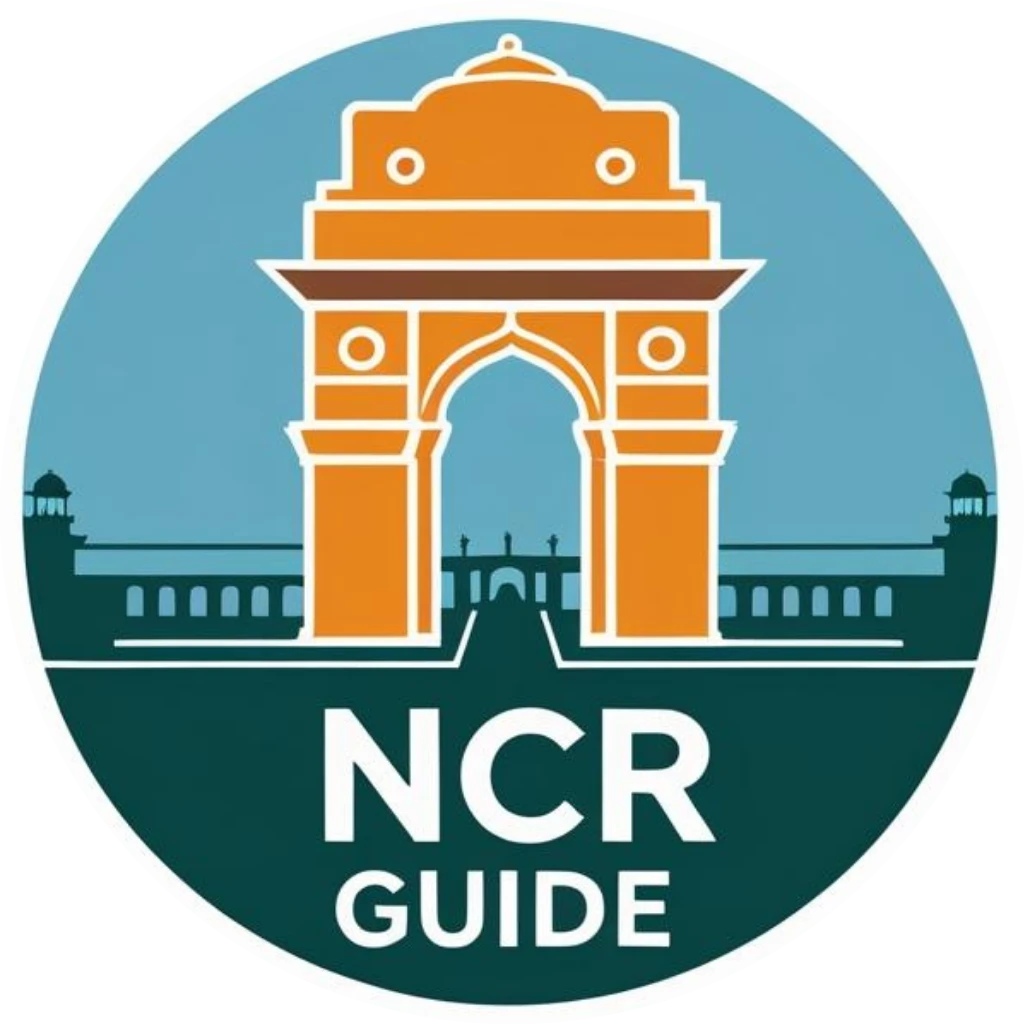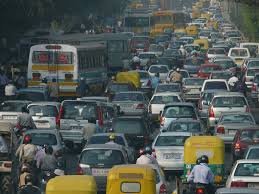In a bold push to address one of Delhi’s most persistent civic issues — traffic congestion — the Delhi government is exploring the construction of an elevated corridor directly above the existing Ring Road. The stretch under consideration spans some of the most gridlocked parts of the city, particularly from Ashram Chowk to Bhairon Marg, where daily traffic snarls have become the norm despite existing flyovers, Metro corridors, and traffic diversions.
The plan is currently in its feasibility study phase, initiated by the Public Works Department (PWD), and is seen as a strategic move to unlock smoother east-west and north-south connectivity within the capital.
Why an Elevated Road Above Ring Road?
The Ring Road is one of Delhi’s most critical arteries — a 40-km-long loop that connects major zones across the city. However, as vehicle numbers continue to grow exponentially, several stretches of this loop have become notorious for long queues, poor traffic flow, and unpredictable travel times.
Key congestion hotspots on the Ring Road include:
- Ashram Chowk
- Sarai Kale Khan
- Bhairon Marg and the Pragati Maidan intersection
- ITO crossing
Despite the presence of multiple flyovers and traffic management efforts, these bottlenecks remain unresolved due to:
- High vehicular volume, especially during peak hours
- Intersection of multiple arterial roads and feeder routes
- Proximity to major landmarks like railway stations, bus terminals, and hospitals
- Inadequate last-mile connectivity for public transport users
- Space constraints preventing horizontal road expansion
The elevated corridor is being seen as a solution that allows for grade-separated movement, meaning vehicles won’t need to stop at intersections, signals, or deal with merging traffic. By constructing the road above the existing Ring Road, the project aims to utilize vertical space without requiring additional land acquisition — a key hurdle in densely built-up urban areas.
Proposed Route: From Ashram to Bhairon Marg
While final alignments are yet to be determined, the Ashram to Bhairon Marg stretch has been prioritized due to:
- Direct impact on major traffic flows between South Delhi and Central Delhi
- Chronic congestion that causes backups even on adjacent roads like Mathura Road, Lajpat Nagar, and Bhogal
- Strategic importance — the route leads to major destinations like India Gate, Connaught Place, Pragati Maidan, and Nizamuddin Station
This proposed corridor would effectively complement (not conflict with) existing infrastructure like the Barapullah Elevated Road, which serves east-west traffic but doesn’t fully cater to Ring Road congestion due to its limited coverage.
Technical Feasibility and Engineering Challenges
The Delhi PWD is currently engaging consultants to assess the technical, environmental, and financial feasibility of the project. Areas under assessment include:
- Structural viability: Can existing foundations and soil types support an additional elevated layer?
- Traffic impact analysis: Will the new corridor actually decongest key choke points or displace the problem elsewhere?
- Design: Single-pier, dual carriageway, with ramp entries/exits at key junctions.
- Construction methodology: Phased execution to reduce traffic disruptions during construction.
- Safety and disaster response: Fire exits, lighting, emergency access points.
A major advantage cited by PWD officials is the plan’s minimal requirement for land acquisition, making it politically and socially more viable than horizontal road expansion.
Broader Urban Impact and Connectivity
If executed, the elevated Ring Road could form part of a larger vision for tiered urban mobility in Delhi — similar to models seen in cities like Bangkok, Shanghai, and Dubai, where ground-level, elevated, and metro corridors work in tandem.
Benefits include:
- Reduced travel time by bypassing multiple signals
- Better fuel efficiency due to fewer stops and idling
- Lower pollution in adjacent residential and market areas
- Improved emergency access to hospitals and stations in the area
- Boosted connectivity for intercity travelers using Nizamuddin Station and the ISBT at Sarai Kale Khan
It also complements other mobility projects such as:
- RRTS corridor (Delhi–Meerut Rapid Rail) at Sarai Kale Khan
- East–West Metro corridors (Phase 4)
- Upcoming tunnels and signal-free corridors around Pragati Maidan
What Commuters Should Know
The project is currently not yet approved for execution, but detailed planning is underway. If approved:
- Construction could begin in phases over the next 18–24 months
- Temporary diversions may be introduced
- Traffic marshals and tech-based monitoring may be used to manage peak-hour chaos
- Smart signage and AI-powered traffic prediction tools could be integrated
The Delhi government is reportedly working in coordination with the Delhi Traffic Police, DMRC, and Central Road Research Institute (CRRI) to ensure that this corridor integrates smoothly with existing systems.
Environmental Considerations
While an elevated road may reduce emissions from idling traffic, construction itself will involve dust, noise, and temporary disruptions. The feasibility study will include an Environmental Impact Assessment (EIA) covering:
- Tree protection and compensatory plantation
- Noise barriers and air pollution controls during construction
- Protection of nearby heritage and residential areas
Given that the Ring Road passes close to several ecologically and historically sensitive zones, including the Delhi Zoo and Purana Qila, clearances from agencies such as the National Monuments Authority may also be required.
A Vertical Leap for Delhi’s Traffic Future
Delhi’s proposed elevated corridor above the Ring Road is more than just a road project — it represents a paradigm shift in how the city tackles mobility. As surface-level congestion becomes harder to address, vertical infrastructure may become a necessity rather than a choice.
If the feasibility study returns positive outcomes, the project could become a template for similar elevated solutions elsewhere in Delhi-NCR — from outer ring roads to satellite towns.
The plan is still evolving, but one thing is clear: Delhi is getting serious about long-term, structural traffic solutions. The success of this project could determine how India’s capital reinvents its transportation landscape for the coming decades.
Frequently Asked Questions (FAQs)
1. Why is Delhi planning an elevated road over Ring Road?
The plan aims to reduce chronic traffic congestion on some of the busiest stretches of Ring Road, especially between Ashram Chowk and Bhairon Marg. Despite existing flyovers, the area experiences severe bottlenecks. The elevated road is expected to enable signal-free, uninterrupted traffic flow without requiring additional land acquisition.
2. What is the proposed route for the elevated corridor?
The initial route under study is from Ashram Chowk to Bhairon Marg, covering key intersections like Sarai Kale Khan, near Nizamuddin Railway Station, and Pragati Maidan. This corridor connects South and Central Delhi, making it a crucial segment for decongestion.
3. Has the project been approved?
As of now, the project is in the feasibility study stage, led by the Delhi PWD. No final approval or budget allocation has been made yet. The study will assess technical, environmental, and economic viability.
4. Will construction cause traffic disruptions?
Yes, but likely in phases to minimize disruption. PWD will coordinate with Delhi Traffic Police and use smart management tools to reduce inconvenience during execution.
5. How will this project benefit commuters?
Benefits include:
- Faster travel times due to signal-free movement
- Reduced vehicle idling and fuel use
- Less surface-level congestion
- Improved access to stations and business hubs
- Enhanced road safety and emergency response efficiency
6. How does this fit into Delhi’s larger transport plan?
The elevated road will complement other infrastructure like:
- Barapullah Elevated Road
- RRTS corridor (Delhi–Meerut)
- Metro Phase 4 expansions
- Pragati Maidan tunnel and ring corridor upgrades
7. What environmental checks will be in place?
The project will undergo an Environmental Impact Assessment (EIA) covering air quality, tree preservation, construction dust management, and noise reduction. Agencies like the National Monuments Authority may also weigh in, given the proximity to heritage zones.
8. Will public transport benefit from this project?
Yes, indirectly. By decongesting the Ring Road, buses, ambulances, and feeder systems can move more efficiently. While not dedicated to public transport, the corridor reduces road burden and improves overall traffic flow.
9. How long will the project take to complete once approved?
If approved, construction could begin within 18–24 months. The timeline for completion would likely be 2–3 years, depending on execution phases and technical complexity.
10. Is land acquisition needed for the elevated corridor?
No major land acquisition is expected, as the elevated road will be built directly above the existing Ring Road, utilizing vertical space and avoiding the legal delays tied to acquiring built-up land.

